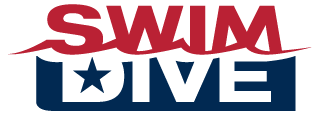You’re only as Strong as Your Weakest Link
By Blake Scribner, Director of Athletic Development, Converse College
Every year thousands of swimmers make the decision to become collegiate athletes. Though these athletes are well versed in the swimming world, many lack knowledge of the strength and conditioning component that ties heavily into collegiate swimming. Many athletes acclimate to the environment within weeks and others it may take months.
At any collegiate level you should always begin with assessing your athletes. One thing is certain; every year you will have new faces to train. You should always begin your program with some form of functional movement assessment. This will allow you to catch imbalances before you begin to train their weaknesses. When you are working with 20 plus athletes in one setting it is very easy for things to slip through the cracks, but the one on one screening allows you to catch those small things. Once you have completed your screenings and compiled your results, it is now time to create your corrective exercise plan.
After the information is compiled, look at what our top three deficits are as a team. Begin by basing your pre-hab program around those deficits. If you do not correct these deficits it will always lead to a more severe injury in the future. As for the other deficits, create individualized programs that the athletes can follow on their own time. The more you show your athletes you care, the harder they will work for you and buy into your program.
When developing your corrective exercise program, do not over think it. Start with simple movements that the athletes can grasp and then expand into more complex movement patterns. Many times I see coaches warming up with movements that are setting their athletes up for failure. For example; a scissor lunge is a great plyometric exercise that works on balance, heart rate elevation and explosion. The negative to this exercise is that many athletes are not physically strong enough in the glutes, hips and ankles to perform such a movement, leading to a severe ‘’valgus’’ knee angle. If an athlete cannot physically perform a 2 legged squat jump properly then they should never be doing single leg plyometric exercises. Every athlete can benefit from hip, knee and ankle strengthening and stability exercises. For example, if your athlete is suffering from a “valgus” knee angle when performing exercises, their corrective exercises could involve side lying leg raises, clam shells, single leg balancing and ankle/calf stretches. Also, remember that female athletes have a greater “valgus” knee angle due to having wider hips than males and along with that comes weaker hips. These two together make them more susceptible to injury, just while performing simple movement patterns, not to mention the more involved movements.
As a coach, it is hard to take the time away to focus on little things, but always think about the changes that can be made over the course of the athlete’s 4-year career. One thing I learned early in my career is that you and your team are only as strong as your re-hab and pre-hab programs that you institute. Do the little things to reap the big rewards.

